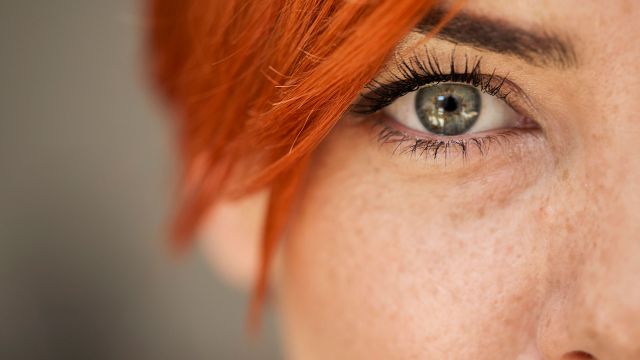Updated on December 9, 2022.
Your eyes work closely with your brain to help you see, and any interruptions in the circuit could spell trouble for your vision.
At the most basic level, the retina, a layer of tissue in the back of the eye, is responsible for capturing the light we see. It then sends that light through the optic nerve to the brain, where the images we see are processed.
When a portion of the retina—more specifically, the macula—doesn’t work as it should, it’s known as macular degeneration. In the United States, age-related macular degeneration is a top cause of vision loss among older adults.
Macular degeneration affects the center of a person’s vision—typically the area of sharpest eyesight—and destroys the ability to see objects clearly. Peripheral (side) vision is not affected by macular degeneration. In early cases, vision may become blurred, and can progress to complete loss of sharp vision in those with advanced cases. People with severe macular degeneration are considered legally blind, though peripheral vision is retained.
Types of macular degeneration
Macular degeneration develops in two forms: wet and dry. The vast majority of cases—between 70 and 90 percent—are dry. Dry macular degeneration is categorized by the breakdown of the macula and the supportive tissue. The condition may begin in one eye before affecting both. Over time, it may affect a person’s ability to read and recognize faces. Other symptoms include hazy vision and the need for bright lights to see clearly. Dry macular degeneration doesn’t always lead to complete loss of vision, however.
Wet macular degeneration is less common than dry macular degeneration. This form of the disease begins like dry macular degeneration. In later stages, abnormal blood vessels behind the retina leak blood or fluid into the macula. This form of macular degeneration happens more suddenly and can be more severe. Symptoms of wet macular degeneration include distortions in vision, such as straight lines appearing crooked, dark spots, and the inability to view colors as brightly.
Stages of macular degeneration
Macular degeneration progresses over time. There are three stages: early, intermediate, and late. These stages are categorized by the size and number of drusen, which are fatty, yellow deposits beneath the retina. Although drusen don’t cause macular degeneration, the presence of these deposits ups your risk for the condition.
Early: Vision loss is unlikely during the early stage of macular degeneration, a period where drusen are about the width of a human hair. Drusen are detected and measured during an eye exam, making regular examinations important.
Intermediate: By this point, drusen are large and there may be changes in the pigment of the retina. These changes cannot be detected with the naked eye; an eye exam is necessary. Although vision loss during the intermediate stage is possible, it may not be noticeable.
Late: During the later stages of macular degeneration, vision loss becomes apparent. This loss of sight is caused in one of two ways: the deterioration of the macula and surrounding tissue (dry) or leakage of abnormal blood vessels into the macula (wet).
Causes and risk factors
There is no definitive cause of macular degeneration, but experts believe a combination of environmental and genetic factors are to blame. Macular degeneration is more common among people aged 55 or older and among white people compared to those of other races and ethnicities.
People who carry certain genes or have a family history of macular degeneration are also at increased risk. Having a parent or sibling with the condition raises your chances of developing it by about 50 percent.
Smoking, obesity, and high blood pressure have also been linked to a higher risk of macular degeneration.
Diagnostic process
Macular degeneration is diagnosed with a comprehensive dilated eye exam. An ophthalmologist will widen your pupils and likely identify any changes to the retina or macula, including the appearance of drusen and changes in pigmentation. Through a series of procedures, your ophthalmologist will also look for the presence of abnormal blood vessels beneath the retina. The presence of these abnormalities may warrant a diagnosis of macular degeneration.
Treatment options and prevention
There is no cure for macular degeneration, and vision loss can’t be restored with treatment. Lifestyle changes, vitamins, injections, and surgery may be possible treatment options, depending on the severity of the condition and whether it’s wet or dry macular degeneration.
Certain lifestyle changes, like eating a nutritious diet rich in leafy greens and fatty fish, quitting smoking, and getting more exercise may help prevent macular degeneration and could help slow the progression of the disease.
A 2020 Age-Related Eye Disease Study (AREDS) found that certain vitamin supplements such as calcium may slow the progression to late-stage macular degeneration. But it’s important to check with your healthcare provider first before stocking up on vitamins.
There are other treatment options for wet macular degeneration, such as anti-VEGF injections or photodynamic therapy. Although these treatment options won’t cure the condition, they may prevent further vision loss by stopping the leakage from abnormal blood vessels.
Drugs that prevent the growth of abnormal blood vessels may be injected directly into the eye over the course of several months. Varying types of lasers may also be used to close the openings of abnormal blood vessels to prevent further leakage into the retina.
Not all treatment options are safe for everyone, but low vision rehabilitation may benefit many. Macular degeneration generally doesn’t cause total blindness, but it can diminish your ability to do things like drive and read. Your ophthalmologist, rehabilitation specialist, and occupational therapist can help you find ways to live with your changing vision.







